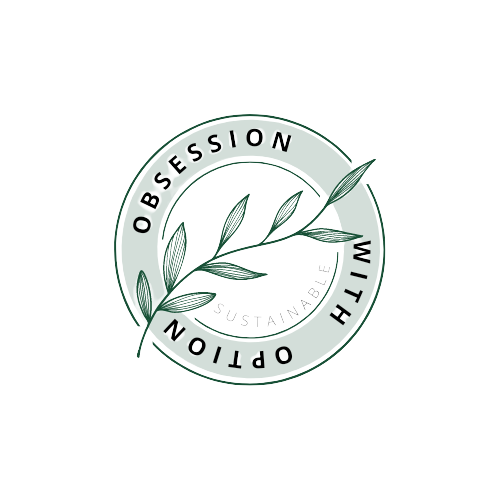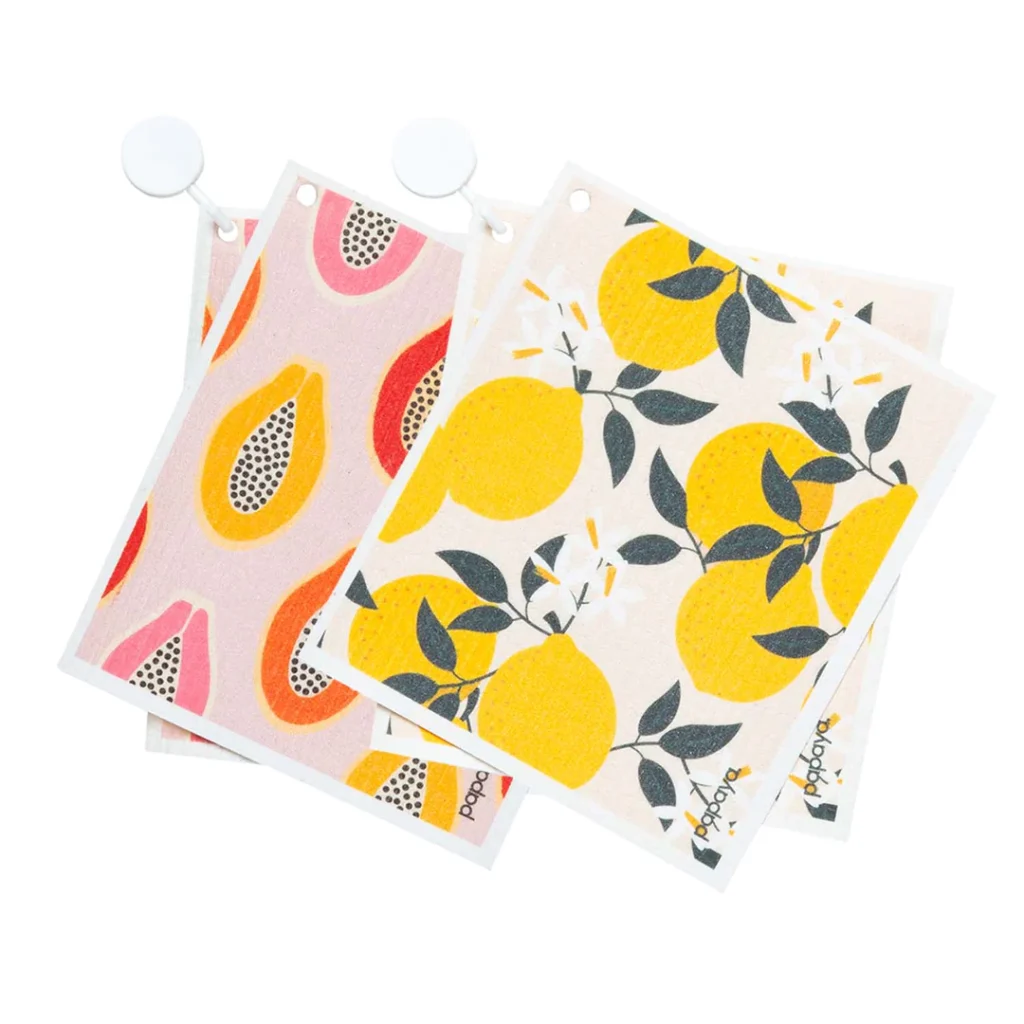You’re probably familiar with the increasing popularity of reusable products as a more environmentally friendly alternative to single-use items. But have you ever wondered if these products are truly non-toxic and sustainable? Enter Papaya Reusables, a brand that aims to provide eco-conscious consumers with a range of practical and stylish reusable goods. With their commitment to using non-toxic materials and employing sustainable production methods, Papaya Reusables has become a go-to choice for those seeking a greener lifestyle. Let’s explore whether Papaya Reusables truly lives up to its promise of being both non-toxic and sustainable.
1. Overview of Papaya Reusables
1.1 What are Papaya Reusables?
Papaya Reusables are a line of environmentally-friendly products designed to reduce waste and promote sustainability. These products are made with the intention of replacing single-use disposables that contribute to pollution and the depletion of natural resources. Papaya Reusables include items such as reusable bags, bottles, utensils, and food storage containers. By offering reusable alternatives, Papaya Reusables aim to empower individuals to make more sustainable choices in their everyday lives.

1.2 Benefits of Using Papaya Reusables
Using Papaya Reusables offers several key benefits. First and foremost, these products help to reduce waste and decrease reliance on single-use items. By choosing reusable options instead, you can significantly reduce your individual carbon footprint and contribute to a cleaner, healthier planet. Additionally, Papaya Reusables are often made with non-toxic materials, ensuring that they are safe for both you and the environment. These products also tend to be more durable, saving you money in the long run as they can be used repeatedly. Finally, by supporting Papaya Reusables, you are contributing to the growth of a more sustainable economy and encouraging the development of innovative solutions to environmental challenges.
2. Non-Toxic Nature of Papaya Reusables
2.1 Papaya Reusables and Toxic Chemicals
One of the key concerns with everyday products, particularly those made from plastics, is the presence of toxic chemicals. Papaya Reusables prioritize the use of non-toxic materials, ensuring that your health and wellbeing are not compromised. Conventional single-use products often contain harmful chemicals such as BPA (Bisphenol A) and phthalates, which have been linked to various health issues. With Papaya Reusables, you can have peace of mind knowing that the products you are using are free from these toxic compounds.
2.2 How are Papaya Reusables Made Non-Toxic?
Papaya Reusables are made non-toxic through careful material selection and manufacturing processes. These products are often made from materials such as food-grade silicone, stainless steel, or natural fabrics like organic cotton and hemp. These materials are chosen for their inherent non-toxic properties and their ability to be safely reused. In addition, Papaya Reusables prioritize the use of eco-friendly dyes and finishes, further minimizing the potential for toxicity. By utilizing these non-toxic materials and manufacturing practices, Papaya Reusables offer a safer alternative to traditional single-use products.

3. Sustainability of Papaya Reusables
3.1 Papaya Reusables and Environmental Impact
The environmental impact of single-use products is undeniable. From plastic pollution in our oceans to the depletion of natural resources, the consequences of single-use consumption are severe. Papaya Reusables aim to combat this issue by offering sustainable alternatives. By choosing Papaya Reusables, you are actively reducing the demand for single-use items, thereby decreasing the amount of waste generated and the resources consumed. This shift towards reusable products helps to preserve natural resources, minimize pollution, and mitigate the negative impacts of traditional supply chains.
3.2 Factors Affecting the Sustainability of Papaya Reusables
The sustainability of Papaya Reusables depends on several factors. First and foremost, it relies on the durability and longevity of the products themselves. Reusability is essential to ensure that these items can replace single-use alternatives for an extended period. The materials used in Papaya Reusables also play a crucial role. Opting for sustainable materials that have a low environmental impact, such as organic cotton or stainless steel, further enhances the sustainability of these products. Additionally, the manufacturing processes and waste management practices employed by Papaya Reusables can significantly influence their overall sustainability. By prioritizing eco-friendly production methods and promoting responsible waste disposal, Papaya Reusables strive to minimize their environmental footprint.
4. Life Cycle Assessment of Papaya Reusables
4.1 Evaluation of Resources Used in Production
To assess the sustainability of Papaya Reusables, a life cycle assessment (LCA) is conducted. This evaluation examines the resources used at each stage of the product’s life, from raw material extraction to disposal. By conducting an LCA, the environmental impact of Papaya Reusables can be quantified and compared to that of single-use alternatives. Evaluating the resources used in production helps identify areas for improvement and informs the overall sustainability strategy of Papaya Reusables.
4.2 Analysis of Greenhouse Gas Emissions
Greenhouse gas emissions are a significant concern when assessing the environmental impact of any product. Papaya Reusables undergo a thorough analysis of their greenhouse gas emissions throughout their life cycle. This assessment takes into account the emissions associated with raw material extraction, manufacturing, distribution, and eventual disposal. By quantifying the greenhouse gas emissions, Papaya Reusables can identify opportunities for reduction and strive towards a lower carbon footprint.
4.3 Consideration of Energy Consumption
Energy consumption is another critical factor in assessing the sustainability of Papaya Reusables. The production processes involved in manufacturing these products require energy, which, depending on its source, can contribute to environmental degradation. Papaya Reusables prioritize the use of renewable energy sources and energy-efficient manufacturing practices to minimize their energy consumption. By considering energy consumption throughout the product’s life cycle, Papaya Reusables aim to reduce their overall environmental impact.
4.4 Waste Management of Papaya Reusables
Waste management is an essential aspect of sustainability. Papaya Reusables aim to implement efficient waste management practices to ensure that their products have minimal impact on the environment at the end of their life. This may involve designing products that are recyclable or compostable, establishing recycling programs for their products, or encouraging customers to properly dispose of their Papaya Reusables at the end of their useful life. By prioritizing responsible waste management, Papaya Reusables strive to maximize their sustainability and minimize their contribution to landfill waste.
5. Durability and Longevity of Papaya Reusables
5.1 Materials Used in Papaya Reusables
The durability and longevity of Papaya Reusables are key factors in their overall sustainability. These products are made from carefully selected materials that are known for their strength and durability. For example, stainless steel water bottles are resistant to impacts and can withstand everyday wear and tear. Similarly, reusable bags made from sturdy fabrics like organic cotton or hemp can withstand heavy loads without tearing. By utilizing durable materials, Papaya Reusables are designed to last, reducing the need for frequent replacements and ultimately decreasing waste.

5.2 Testing for Durability and Longevity
To ensure the durability and longevity of Papaya Reusables, rigorous testing is conducted. These products undergo various simulations and assessments to evaluate their performance in real-life conditions. Testing may involve subjecting the products to repeated use, exposure to extreme temperatures, or mechanical stress to determine their strength and resilience. By undergoing thorough testing, Papaya Reusables can provide consumers with assurance that their products are built to last, further enhancing their sustainability.
5.3 Impacts of Durability on Sustainability
The durability of Papaya Reusables has several positive impacts on sustainability. Firstly, by being long-lasting, these products reduce the need for frequent replacements, ultimately minimizing waste generation. Secondly, the use of durable materials reduces the demand for resource-intensive manufacturing processes, conserving natural resources. Finally, the longevity of Papaya Reusables ensures that they have a lower overall carbon footprint compared to their single-use counterparts. By considering durability as a critical aspect of sustainability, Papaya Reusables offer a more environmentally-friendly alternative to traditional single-use products.
6. Reusability and Waste Reduction
6.1 Papaya Reusables and Single-Use Disposables
One of the key advantages of Papaya Reusables is their ability to replace single-use disposables. Single-use products, such as plastic bottles, cutlery, and food containers, generate a massive amount of waste that often ends up in landfills or pollutes the environment. By opting for reusable alternatives offered by Papaya Reusables, you can significantly reduce your waste output and contribute to a more sustainable future.
6.2 Comparison of Waste Generation
When comparing the waste generation of Papaya Reusables with single-use items, the difference is staggering. A single reusable water bottle, for instance, can replace hundreds, if not thousands, of disposable plastic bottles over its lifetime. Similarly, using a stainless steel or bamboo straw eliminates the need for countless single-use plastic straws. By choosing Papaya Reusables, you are actively reducing waste at its source and minimizing your impact on the environment.
6.3 Reuse Potential and Waste Reduction
The reuse potential of Papaya Reusables is one of their greatest strengths in waste reduction. These products are designed to withstand repeated use, ensuring that they can replace their single-use counterparts over an extended period. The reuse potential of Papaya Reusables directly translates into reduced waste generation. By actively choosing reusable options, you can make a significant positive impact by reducing the amount of waste that enters landfills or pollutes our natural ecosystems.

7. Environmental Certification and Standards
7.1 Overview of Environmental Certifications
Environmental certifications play a crucial role in establishing the credibility and reliability of sustainability claims made by companies. These certifications are awarded to products or businesses that meet specific environmental standards and requirements. They provide a level of assurance to consumers that the products they are purchasing have been independently verified for their environmental impact and sustainability practices.
7.2 Importance of Certifications for Papaya Reusables
For Papaya Reusables, obtaining environmental certifications is a testament to their commitment to sustainability. These certifications demonstrate that the products have undergone rigorous evaluation and adhere to specific environmental standards. By obtaining certifications, Papaya Reusables offer transparency and build trust with consumers who prioritize sustainability. The importance of certifications cannot be overstated, as they provide consumers an easy way to identify genuinely eco-friendly products.
7.3 Major Certifications for Sustainable Products
Several major certifications are recognized for sustainable products, and Papaya Reusables may pursue these certifications to validate their commitment to sustainability. Examples of widely recognized certifications include the Forest Stewardship Council (FSC) certification for sustainable wood sourcing, the Global Organic Textile Standard (GOTS) certification for organic textiles, and the Cradle to Cradle certification for products that prioritize circular economy principles. By achieving these certifications, Papaya Reusables can showcase their alignment with industry-recognized sustainability standards.
8. Consumer Perception and Adoption
8.1 Consumer Awareness and Knowledge
Consumer awareness and knowledge play a vital role in the adoption of sustainable products like Papaya Reusables. As individuals become more informed about the environmental impact of single-use products, they are increasingly seeking alternatives that align with their values. By raising awareness about the benefits and sustainability attributes of Papaya Reusables, more consumers can make informed choices that contribute to waste reduction and a healthier planet.
8.2 Factors Influencing Consumer Adoption
Several factors influence consumer adoption of Papaya Reusables. Firstly, the availability and accessibility of these products are crucial. Consumers are more likely to adopt reusable alternatives when they are readily available, both online and in physical stores. Pricing also plays a significant role, as affordability can influence consumer decisions. Furthermore, consumer education and marketing efforts that highlight the benefits and positive environmental impact of using Papaya Reusables can significantly influence adoption rates. By addressing these factors, companies can increase consumer uptake and drive sustainable change.
8.3 Challenges and Opportunities for Market Penetration
While the adoption of Papaya Reusables is growing, several challenges and opportunities remain for market penetration. The dominance of single-use products and established habits pose significant challenges to widespread adoption. However, these challenges also present opportunities for innovative marketing strategies and education campaigns that can drive behavior change. Collaborations with retailers, restaurants, and other establishments can also create opportunities for more people to experience the benefits of Papaya Reusables. By addressing challenges head-on and seizing opportunities, the market penetration of Papaya Reusables can be expanded, benefiting both consumers and the environment.
9. Case Studies and Success Stories
9.1 Success Stories of Papaya Reusables
Papaya Reusables have garnered success stories from individuals and businesses alike, showcasing the positive impacts of adopting these sustainable alternatives. Numerous individuals have shared their experiences on social media, expressing how Papaya Reusables have helped them reduce waste and make more environmentally-conscious choices. Additionally, businesses that have incorporated Papaya Reusables in their operations have seen improvements in their sustainability metrics and received positive feedback from customers. These success stories highlight the potential for widespread adoption and the positive change that can be achieved through the use of Papaya Reusables.
9.2 Business Practices and Implementation Strategies
Companies that have successfully implemented Papaya Reusables have often adopted specific business practices and strategies. These may include incorporating sustainability as a core value and integrating it into every aspect of their operations. Companies may also actively engage with customers and solicit feedback to continuously improve their products and create a positive customer experience. Furthermore, collaborations with sustainability-focused organizations and influencers can help raise awareness and reach new audiences. By sharing these business practices and implementation strategies, others can learn from their successes and further drive the adoption of Papaya Reusables.
10. Conclusion
Papaya Reusables offer a non-toxic and sustainable alternative to single-use products that contribute to pollution and waste. By opting for Papaya Reusables, you can significantly reduce waste, minimize your carbon footprint, and contribute to a healthier planet. The non-toxic nature of these products ensures their safety for both you and the environment. The sustainability of Papaya Reusables is inherent in their design, with careful consideration given to the selection of materials, manufacturing processes, and waste management practices. The durability and longevity of these products further enhance their sustainability, allowing them to replace single-use items over an extended period. By actively choosing reusable alternatives, you can play a crucial role in waste reduction and help pave the way to a more sustainable future.
“Our work is sustained by our readers. This article includes affiliate links. If you decide to click on a link and make a purchase, we might earn a commission. This will not impact your cost. We exclusively collaborate with brands that align with our principles. We sincerely appreciate your backing.”













